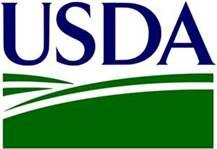
USDA-NRCS Programs
The U.S. Department of Agriculture Natural Resources Conservation Service provides technical and financial assistance to landowners in Georgia to voluntarily address soil, water and related natural resource concerns on private lands.

Agricultural Conservation Easement Program (ACEP)
The Agricultural Conservation Easement Program (ACEP) provides financial and technical assistance to help conserve agricultural lands and wetlands and their related benefits. Under the Agricultural Land Easements component, NRCS helps Indian tribes, state and local governments and non-governmental organizations protect working agricultural lands and limit non-agricultural uses of the land. Under the Wetlands Reserve Easements component, NRCS helps to restore, protect and enhance enrolled wetlands.
ACEP is a new program that consolidates three former programs – the Wetlands Reserve Program, Grassland Reserve Program and Farm and Ranch Land Protection Program.
Benefits
Agricultural Land Easements protect the long-term viability of the nation’s food supply by preventing conversion of productive working lands to non-agricultural uses. Land protected by agricultural land easements provides additional public benefits, including environmental quality, historic preservation, wildlife habitat and protection of open space.
The ACEP, created through the 2014 Farm Bill, is a program that has two components, known as Agricultural Land Easements (ALE) and Wetlands Reserve Easements (WRE). The ACEP combines NRCS’ former Farm and Ranch Lands Protection Program (FRPP), Grassland Reserve Program (GRP) and Wetlands Reserve Program (WRP).
Applications for the ACEP-ALE are accepted from eligible partners. These eligible entities may submit proposals to NRCS to acquire a conservation easement on eligible agricultural land. NRCS does not accept applications for ACEP-ALE directly from producers. Producers will need to work with an eligible entity to pursue funding for an ACEP-ALE conservation easement. Some examples of eligible entities include county Board of Commissioners, Land Trusts and Land Conservancies.
Approved ALE easements would prevent productive working lands from being converted to non-agricultural uses and maximize protection of land devoted to food production. Cropland, rangeland, grassland, pastureland and nonindustrial private forestland are eligible.
Wetlands Reserve Easement (WRE) applications are accepted directly from producers on eligible lands. Wetlands reserve easements would restore and enhance wetlands and improve habitat. Eligible lands include farmed or converted wetlands that can be successfully and cost-effectively restored. Applications will be rated according to the easement’s potential for protecting and enhancing habitat for migratory birds, fish and other wildlife.
To learn more, contact your local USDA Service Center or go to http://www.nrcs.usda.gov/GetStarted.
NRCS programs include
Conservation Stewardship Program (CSP)
Environmental Quality Incentives Program (EQIP)
Conservation Innovation Grants (CIG)
See these topics for more information or go to the USDA NRCS-Georgia website.
Microirrigation
Farmers can educate themselves on U.S. microirrigation practices from the USDA’s National Resources Conservation Service (NRCS). Microirrigation includes subsurface-drip irrigation, which is used for root-level water delivery to crops such as cotton and corn.